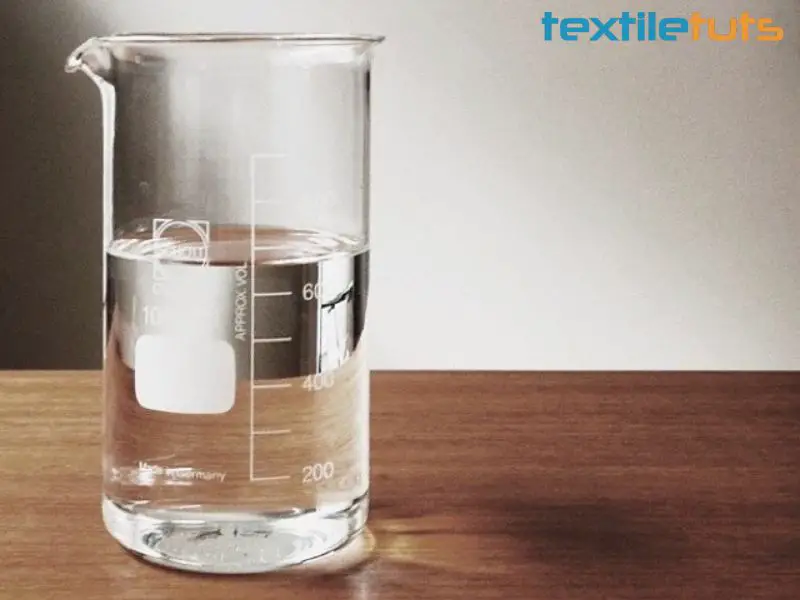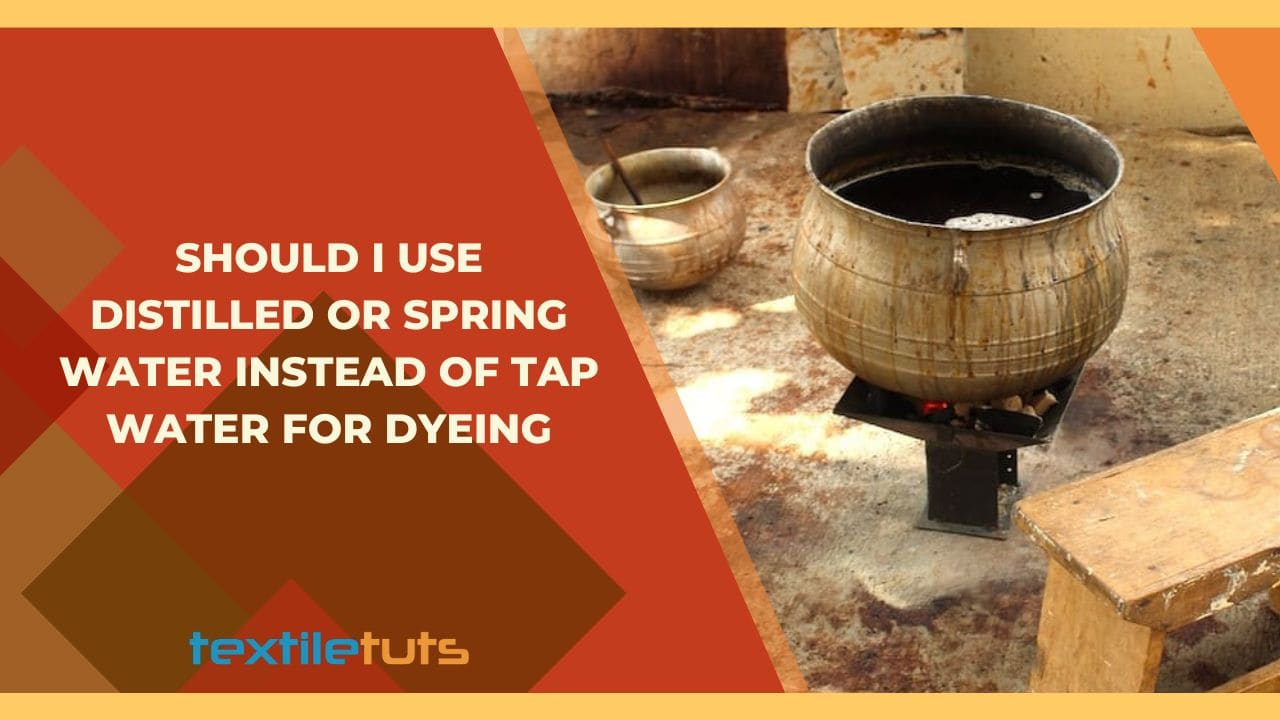Should I Use Distilled or Spring Water Instead of Tap Water for Dyeing?
At first, we need to know what is hard water.
Water that contains soluble salt of Calcium, magnesium such as bicarbonate, carbonate, sulfates, and chlorides are known as hard water. The term is mainly known as water hardness. Two types of water hardness are present.
- Temporary hardness
- Permanent hardness
The harness caused by bicarbonate salts of Calcium and Magnesium is known as Temporary hardness. This hardness can be eliminated by just boiling and filtering. During heating, the bicarbonate decomposed into insoluble carbonate (precipitation), and carbon-di-oxide is generated. The reactions are:
Mg(HCO3)2 (aq) ⇒ MgCO3 (s) + CO2 (g) + H2O
Ca(HCO3)2 (aq) ⇒ CaCO3 (s) +CO2 (g) +H2O
Permanent hardness is caused by chlorides, nitrates, and sulfates of Calcium and Magnesium. No precipitation is obtained by boiling in the case of permanent hardness. This hardness can be removed by chemical treatment.
The hardness is measured as mg/L or simply ppm (parts per million). It is the number of parts of contaminants per million parts of water.
| Soft water | Less than 17.1 |
| Slightly hard water | 17.1-60 |
| Moderately hard water | 60-120 |
| Hard water | 120-180 |
| Very hard water | Above 180 |
The salts and minerals present in hard water may be beneficial for your health sometimes but does create some problems during dyeing. Spotting in dyeing can occur when sodium carbonate comes into contact with those minerals and creates ‘Soap Scum.’ Sometimes, for some fabric color dye products, generation of complexes arise, which is very difficult to wash-out. Scale formation in machines is another significant drawback of using hard water.
How Can You Make Hard Water Soft Comfortably?
Firstly, you can use distilled water which will solve your problem, but it will increase your expenses. The simplest solution is to buy a water softener that contains Phosphate. The trade name of one type of water softener is Calgon-T or Metaphos. They are found in powder form and contain sodium hexametaphosphate. Some other water softeners are commercially found as Jacquard’s Calgon, Dharma’s water softener, and ProChem’s Metaphos. Don’t buy phosphate-free liquid containing polycarboxylate. You can contact your dye supplier also for those.

During washing of hydrolyzed excess fiber reactive dyes after dyeing, you must use water softeners if the water is hard. Otherwise, the wash will not be good, and the washing-off will be interfered with by hard water.
The other thing is, what if you have a household water softener in your home? That is completely fine. You can use that water for dyeing. If you are unsure about how much the water is softened and will that be suitable for your dyeing, then use the cold water. Generally, cold water is not softened by household softeners, and then you must use the above-mentioned water softeners. If you still feel uncertain about using softened water, consider testing its pH to ensure it aligns with the dyeing requirements. Proper water quality is especially important for achieving vibrant and consistent results, especially when working with specialty fabrics. For instance, dyeing microfiber explained involves a slightly different approach due to its synthetic nature, which may react uniquely to water composition.
Sometimes the water purifying machines remove the materials responsible for harness by reverse osmosis. The question is, can you use that? The answer is ‘Yes, you can.’ But the chemical water softeners are much easier to find and also much less expensive.
You should not use spring waters as they sometimes have those minerals present. But rainwater will do your work fine.
That’s all for today. If you’re wondering is fabric dye permanent or not, check out the linked article.

